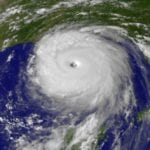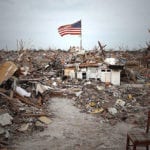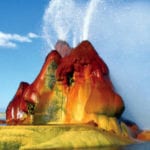 Weird Stuff
Weird Stuff  Weird Stuff
Weird Stuff  Mysteries
Mysteries 10 Tragic Disappearances and Deaths in Joshua Tree National Park
 History
History 10 Ways Childhood Really Sucked in the Old West
 Music
Music 10 Name Origins of Famous Bands from the 1990s
 Religion
Religion 10 Biggest Turnarounds by the Catholic Church
 Weird Stuff
Weird Stuff 10 Unbelievable Times Laws Had Unintended Consequences
 Humans
Humans Ten Historic Women Who Deserve Way More Credit Than They Got
 Movies and TV
Movies and TV 10 Films That Spawned Major Lawsuits
 History
History Ten Times Towns Were Wiped Off the Face of the Earth
 Creepy
Creepy 10 of the Most Disturbingly Haunted Public Houses in the UK
 Weird Stuff
Weird Stuff 10 Niche Subcultures That Are More Popular Than You Might Think
 Mysteries
Mysteries 10 Tragic Disappearances and Deaths in Joshua Tree National Park
 History
History 10 Ways Childhood Really Sucked in the Old West
Who's Behind Listverse?

Jamie Frater
Head Editor
Jamie founded Listverse due to an insatiable desire to share fascinating, obscure, and bizarre facts. He has been a guest speaker on numerous national radio and television stations and is a five time published author.
More About Us Music
Music 10 Name Origins of Famous Bands from the 1990s
 Religion
Religion 10 Biggest Turnarounds by the Catholic Church
 Weird Stuff
Weird Stuff 10 Unbelievable Times Laws Had Unintended Consequences
 Humans
Humans Ten Historic Women Who Deserve Way More Credit Than They Got
 Movies and TV
Movies and TV 10 Films That Spawned Major Lawsuits
 History
History Ten Times Towns Were Wiped Off the Face of the Earth
 Creepy
Creepy 10 of the Most Disturbingly Haunted Public Houses in the UK
10 Amazing Survivors Of Unusual Natural Disasters
Mother Nature has always been the world’s deadliest serial killer. But even her most violent phenomena have met their match in the occasional lucky human. Over the years, people have walked away from firestorms, lightning strikes, and even Australia’s scariest wild animal.
10Queen Of The Sea
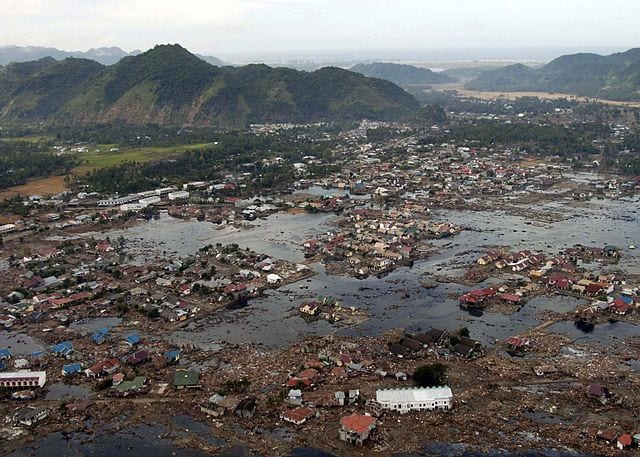
The Queen of the Sea was a Sri Lankan train that tragically lived up to its watery name. One December, the overloaded locomotive was approaching its final destination when it was hit by an enormous wave caused by the devastating Indian Ocean Tsunami of 2004. All eight carriages were instantly flooded and flung off the tracks with incredible force.
Daya Wijaya Gunawardana, a Colombo restaurateur, miraculously survived when the coach he was in flipped over four times. But when it came to a standstill, Gunawardana’s problems were only just beginning. He was trapped in a flooded train, and he couldn’t find his two adult children. After nearly an hour inside with a crowd desperate to get out, he finally got his chance to escape through a window. He was reunited with his family as they fled uphill to escape a second wave.
That same second wave spelled trouble for passenger Shenth Ravinda, who could only watch the merciless wall of destruction bear down on him while he was still trapped inside the Queen. Somehow, Ravinda lived through a second round of the same disaster, later limping 2 kilometers (1.3 mi) to look for help, but he could never forget the screaming and the many child passengers who hadn’t survived. Depending on the source, between 800–1,700 passengers died, making it one of the worst railway disasters in history.
9The Prisoner Of St. Pierre
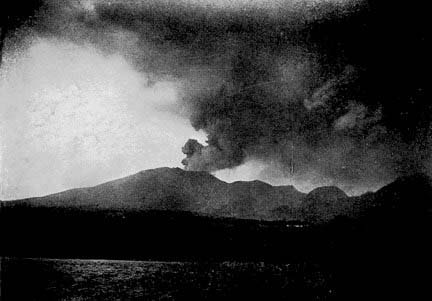
Louis-Auguste Cyparis was an escaped convict who handed himself over to the authorities in May 1902. It was a decision that would save his life. A resident of St. Pierre on the Caribbean island of Martinique, Cyparis’s escape attempt saw him sentenced to solitary confinement in the dungeon of the local prison.
The month before, the residents of St. Pierre had begun to notice tremors coming from the nearby volcanic Mt. Pelee. Soon, clouds of ash and the stench of sulphur made life unbearable. Venomous snakes fleeing the mountain invaded St. Pierre and nearby villages, killing 200 animals and 50 people. A serious warning came when a boiling mudflow from the volcano hit a distillery, killing 23 workers and causing a tsunami that damaged St. Pierre’s waterfront. But trust in their leaders was what really doomed the people of St. Pierre.
After the mudflow, residents began to abandon the city, prompting Governor Louis Moutett to order the military to prevent any more runners. To soothe the citizens—and keep them in town for the upcoming elections—he had the local newspaper declare St. Pierre safe and made no objection when a group of unqualified investigators produced a report stating there was no danger. The situation actually became worse because 8,000 people sought refuge in the city from the surrounding countryside.
On the morning of May 8, the volcano erupted, sending a pyroclastic flow down its south side with such speed that it reached St. Pierre in under a minute. The destruction was complete. Strong masonry was shattered apart like plaster and superheated gas boiled, burned, or poisoned people almost instantly. A rum depot quickly ignited, turning the surrounding streets into rivers of fire, while ships burst into flames in the harbor. Still in solitary in the dungeon, Cyparis was severely burnt and survived four days of agony alone in his cell. But he was still unbelievably lucky. From a population of 28,000, only Cyparis and a shoemaker survived in the city.
8The Cloud Suck Survivor

As fluffy as it sounds, the deadliest ordeal of Ewa Wisnierska’s life began when she got sucked into a cloud. The experienced German paraglider was one of around 120 hopefuls training for the 2007 Paragliding World Championships in Manilla, Australia. After two hours soaring through perfect weather, Wisnierska noticed a growing thunderstorm up ahead. Sensibly, she decided to fly well around it, fearful of a phenomenon called “cloud suck”—literally being sucked into the clouds by an updraft near a developing storm system.
Unfortunately, Wisnierska misread the clouds. Approaching one she believed to be safe, the dreaded updraft suddenly grabbed her glider and shot her upward at 20 meters (66 ft) per second. Ice and the storm’s thickening darkness blinded her, while rain, hail, and turbulence made it impossible to navigate, but the real danger was now from lightning strikes, oxygen deprivation, and the freezing cold. Through sheer effort, Wisnierska managed to keep her glider from completely collapsing. But at an altitude higher than Mount Everest and nearly encased in ice, her body eventually gave out and she lost consciousness for about 40 minutes.
Her glider’s equipment showed that Wisnierska was now flying at only half the speed required to remain in the air and at a height without sufficient oxygen. She should have died just from that, but blacking out and the subsequent slowing of her bodily functions saved her life. The ice packed around her body might ironically have insulated her from the worst of the cold. Somehow, she survived until a powerful downdraft sucked the glider toward the Earth with tremendous speed, waking her up in the process. Struggling with her sight and frozen body, she still managed to land safely on a farm, where she found herself unable to move. Rescue came when her ground team called her cell phone.
Wisnierska suffered severe frostbite and bruises. But she was relatively lucky. Not far from where she was battling the thunderstorm, a Chinese paraglider was also fighting for his life. He Zhongpin wasn’t so fortunate. He was killed by a lightning bolt.
7The Snow Man

In 2012, a pair of Swedish snowmobilers came across what they assumed was an abandoned car wreck outside the town of Umea. However, when police and rescue workers burrowed through the thick layer of snow around the car, they found an emaciated man in a sleeping bag on the backseat. The 45-year-old was so weak that he could barely speak but he managed to tell his rescuers that he had been imprisoned by the snow for two months.
The find seemed like a miracle, but it ended up causing significant controversy after the man, later identified as Peter Skyllberg, claimed he hadn’t eaten a crumb during that time. Scientists noted that people usually face death by starvation after about four weeks. Others have observed that hunger strikers generally do last around 60 days before succumbing, although admittedly they are usually surviving in warmer conditions. Meanwhile, Skyllberg’s rescuers have claimed he could have escaped the car if he wanted to, suggesting that his near-starvation was more a suicide attempt than an accident.
In any case, Skyllberg’s survival was certainly amazing, leading some to suggest that it points to a form of human hibernation. Other have argued that human beings cannot achieve true hibernation, suggesting that Skyllberg was saved due to the warmth of his clothing, preserving his energy by remaining in the sleeping bag, and eating snow. It is likely that the car also received some insulating benefits from being snowed over, similar to an igloo.
6Deadly Jelly

In 2009, Rachael Shardlow certainly wasn’t thinking about making medical history when she went for a swim in Australia’s Calliope River. The 10-year-old was cooling off when her older brother, Sam, had to quickly pull her from the water. She could no longer see or breathe properly and soon became limp and unresponsive. As he pulled her to shore, Sam noticed long tentacles wrapped around her legs.
As it turned out, the tentacles belonged to the most venomous animal on the planet: the box jellyfish. Experts were shocked that Rachael was recovering in hospital instead of being wheeled into the morgue. Nobody in recorded history has been stung so severely by box jellyfish and lived. The creature’s venom is so agonizing that many victims immediately go into shock and drown. If that wasn’t enough, it also attacks the heart and nervous system. Yet Rachael left the hospital six weeks later with only tentacle scars and some short-term memory loss. Since she is the only survivor of her kind, the schoolgirl will also give the scientific community a rare chance to study the long-term effects of a jellyfish encounter.
5Roy Sullivan
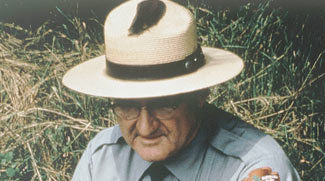
Beginning in 1942, park ranger Roy Sullivan found himself on the receiving end of a lightning bolt no less than seven times. It earned him a smoky spot in the Guinness World Records for surviving more lightning strikes than anyone else. His career might’ve had something to do with it, since six of the incidents happened in the Shenandoah National Park, where he worked for 36 years. Park rangers do run a higher risk than most other occupations, but the bizarreness of Sullivan’s case stands out.
Being in a car (with your windows closed) is the normally the safest place to be when lightning’s afoot, but Sullivan was still hit while driving in 1969. While Sullivan was traveling on a mountain path, a bolt hit two trees standing on opposite sides of the road. After hitting the first and going for the second, the lightning passed through Sullivan’s open windows, burning his eyebrows off in the process. The only strike not to happen in the park came while he nipped out to collect his mail.
Rather cruelly nicknamed “Sparky,” Sullivan might even have caused his wife to get struck. He was with her while she was pegging laundry on the line and she received a bolt instead of him. Fortunately, Mrs. Sullivan proved to be as lightning-proof as her husband. In 1983, after six electricity-free years, Sullivan committed suicide by shooting himself in the head, ending a truly bizarre streak.
4Grace Newberry
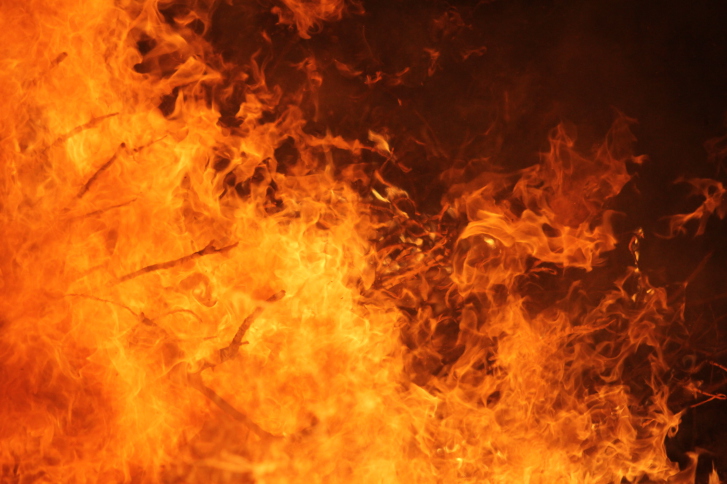
The worst fire in US history started in the forests of Wisconsin during the parched summer of 1871. After killing every person in the village of Sugar Bush, the blaze moved toward the town of Peshtigo, where Grace Newberry lived with her husband and two sons.
At the time, Peshtigo was a safety inspector’s worst nightmare. One of the biggest producers of wood products in the country, Peshtigo’s roads were lined with sawdust and almost all of the buildings were timber-framed. So when the fire hit on October 8, the town went up like a furnace, rapidly killing 1,200 residents.
Unaware that many others seeking safety in water had already been boiled to death, Grace Newberry and her family huddled desperately in a pond. According to Grace’s sister-in-law Martha, the very air appeared to be on fire. Grace lost everything when her husband decided to make a run for it with their two boys, dooming all three. Those who remained in the pond survived, including Grace. Martha Newberry lost her father, four brothers, two sisters-in-law, and five nephews and nieces in the fire. Grace personally saw 89 bodies littering the area and eventually developed temporary blindness from the effects of the fire. She later moved to Vermont with her new husband and had two more children.
3Harrison Okene
In 2013, Harrison Okene was the cook on a Nigerian tugboat. Early one morning, the tug was lugging an oil tanker when disaster struck. A freak wave slammed into the tug, flipping it over and breaking the rope holding it to the tanker. The collision sent Okene tumbling out of the bathroom, dressed only in boxer shorts. By sheer luck, he managed to make it to an air pocket in the engineer’s office. As a safety precaution against pirates in the area, most of the other crew members were locked inside their cabins. All 11 drowned.
Meanwhile, the cook faced a stark reality. The tug had sunk to the ocean floor, leaving Harrison 30 meters (100 ft) underwater with only a single bottle of Coca-Cola for sustenance. His boxers offered little warmth, the oxygen in the air pocket wouldn’t last forever, and he was exhaling deadly carbon dioxide. To add to his fears, Okene could hear thrashing noises, which he believed were sharks or barracudas feasting on his crew mates.
But Harrison was luckier than anyone could have expected. He was able to climb onto a raised platform, which kept him out of water cold enough to kill him within hours. And the seawater actually kept him from succumbing to carbon dioxide poisoning by absorbing the excess CO2. South African rescue divers were simply trying to retrieve any bodies when they were shocked by a hand waving hello to them. After nearly three days, with little oxygen left, Harrison left the wreck in a decompression chamber.
2The Ultimate Survivor
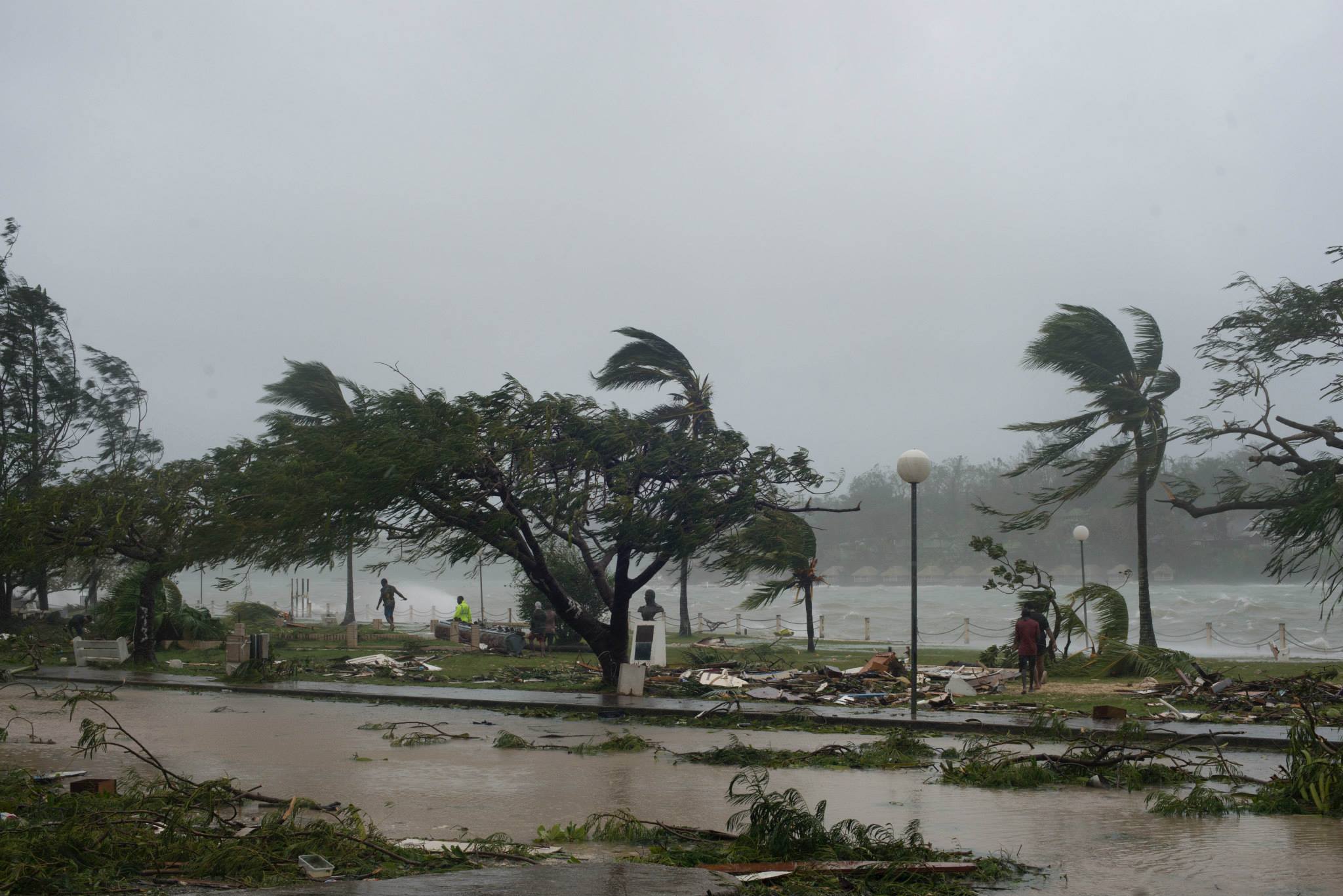
Throughout his long life, 76-year-old Vanuatuan Lik Simelum has survived nearly every natural disaster, including eruptions, landslides, earthquakes, and cyclones.
Nature first tried to kill Simelum when he was 11 and living on the island of Ambryn. The resident volcano erupted for nearly a year, destroying crops and making the water unsafe to drink. It got to the point where the French and British had to evacuate most of the inhabitants, sending Simelum and his family to nearby Epi Island. Which proved to be a bad choice, since the island lost a match with a cyclone a few weeks later. The torrential deluge caused landslides across the island, one of which swept through Simelum’s house during the night, killing his father and brother. His mother made it by holding onto the rafters, even though her back was broken, while Simelum and two of his sisters luckily weren’t at home.
After his mother recovered, she and Simelum were moved yet again, this time to the main island of Efate, where he grew up and became a teacher. He later lived through Cyclones Uma and Pam, which both destroyed parts of his home with wind, flooding, and mud. Pam was particularly devastating, wrecking thousands of homes and leaving at least 17 dead. Simelum was also forced to run from his house during a 7.7 magnitude earthquake that shook Vanuatu in 2009. Even though the United Nations considers Vanuatu the country most at risk from natural disasters, Simelum’s story remains remarkable.
1Halima Suley
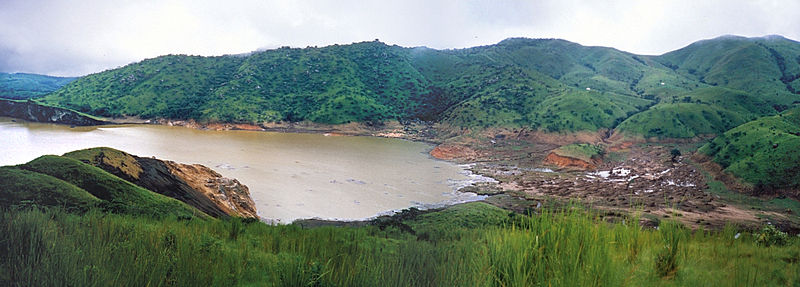
On August 21, 1986, Cameroonian villager Halima Suley was preparing for bed when she heard a rumbling noise. Suley, who lived with her extended family on the shores of Lake Nyos, then felt a sudden gust sweeping through the house before passing out cold. Others witnessed a geyser-like spout exploding out of the lake before a fog formed above the water and grew to around 100 meters (330 ft) tall. The cloud rolled over the land, killing or knocking out everyone within 25 kilometers (15.5 mi).
The next morning, Halima Suley’s screaming brought fellow survivor Ephriam Che running, but there was nothing he could do for the traumatized woman, who kept trying to wake up her 35 dead family members, including all four of her children. Nearby, Suley’s 400 cattle were also lifeless. When Che ran to check on his own family, he discovered the bodies of his parents, siblings, aunts, and uncles. Everywhere, people appeared to have died in their sleep, while those who recovered found their loved ones wiped out, a horror that brought on several suicides. Corpses littered the entire valley and most of the 1,800 who perished ended up in mass graves.
It was soon discovered that the valley had been gassed by a noxious cloud containing an enormous quantity of of carbon dioxide. After years of debate, scientists came to agree that a landslide (perhaps the rumble victims heard) had freed CO2 trapped at the bottom of the lake. Suley’s one silver lining was that her husband was away on business that night, and the couple eventually picked up the pieces of their life and had five more children.


